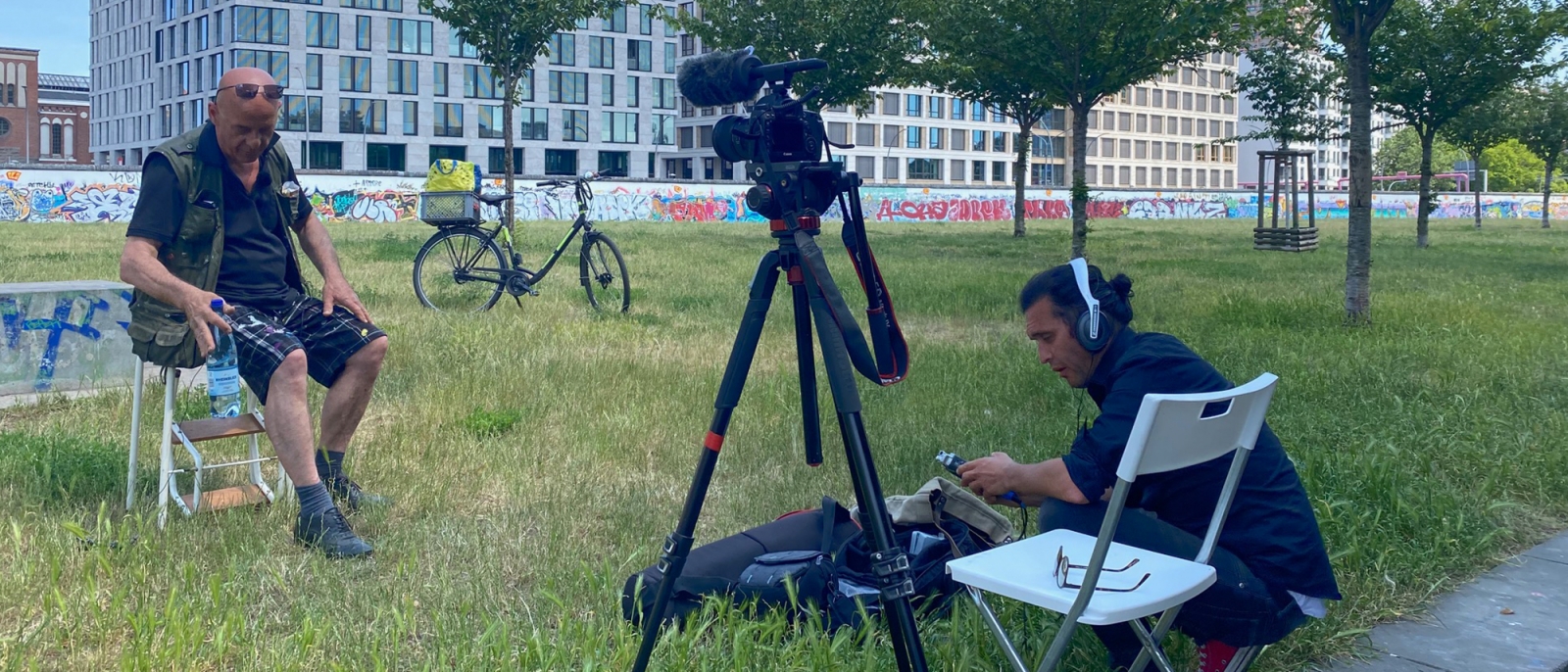We are looking for contemporary witnesses!

Interview mit Künstler Kiddy Citny an der East Side Gallery, 2021 © Stiftung Berliner Mauer
The section of the Berlin Wall between Ostbahnhof and Oberbaumbrücke has become world famous since 1990 as the East Side Gallery. In contrast, the history of everyday life at the border along Mühlenstraße and the period of transformation since 1990 is largely unknown. We are looking for people who would like to share their personal memories and photos of this special Wall site.
Did you live or work near Mühlenstraße before 1989 or in the early 1990s? Did you walk across the border crossing on the Oberbaumbrücke, do you remember the demolition of the buildings on Mühlenstraße and the construction of the barrier walls? Did you experience the GDR border guards on the water or on the street, observe an escape attempt, controls or arrests? Or do you have any other memories or photos of this place, from an East Berlin or West Berlin perspective? Did you live in Kreuzberg, on the other side of the Spree, facing the Wall on Mühlenstrasse? And finally, how did you experience the fall of the Wall, the painting of the Wall in 1990, and the period of transformation after 1990? What changed in your life after 1989?
With your stories and photos, we at the Berlin Wall Foundation would like to make the diverse stories of this historic site visibile and preserve them for future generations, for example in an exhibition at the East Side Gallery. Therefore, we are collecting your memories and are interested in your photos and objects
Please contact our exhibition team:
eastsidegallery [at] stiftung-berliner-mauer.de (eastsidegallery[at]stiftung-berliner-mauer[dot]de)
Tel.: 030 213085 – 222
The Berlin Wall Foundation's work with contemporary witnesses
We see eyewitness work as a way of making everyday life with the Berlin Wall and the German-German division visible and comprehensible and see ourselves as part of oral history. It is also about giving victims and their relatives a voice. In our archive, the memories of contemporary witnesses are collected, preserved and made accessible to the public.